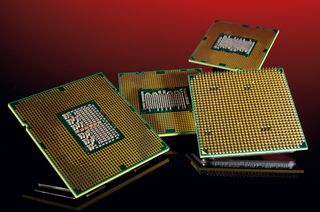The physical web arrives – here's why it will change your life
Scott Jenson explains how smart devices can wirelessly broadcast URLs to nearby devices, bringing the web into the real world.

With the cost of microprocessors plummeting, we're in a situation where nearly any consumer device can become 'smart'. This could mean:
- Bus stops that display details of when the next bus is coming
- Vending machines that accept payment via a cashless tap (and send you a receipt)
- Movie posters that provide extras such as previews or trivia quizzes
- Museum displays that offer multiple languages or more detailed information
All of these examples demonstrate how smarter devices can make life a little bit easier. But let's go further – what if you could walk up to any of these devices, pull out your phone and interact with one of them instantly? When you were done, you'd just walk away with nothing left behind on your phone.
It's a 'use it and lose it' approach to interaction that would encourage entirely new product categories and usage models. But while it's a deceptively simple idea, at the moment we don't even allow ourselves to consider it. Most of us are looking at the world through entirely app-coloured glasses.
The problem
We already have a universal system of information and interaction: the web. While it's clearly not as fancy as native applications, for the majority of these simple service examples, the web is perfectly adequate.
Its undeniable superpower is to provide interaction on demand. Just like you can visit any website with a tap, the same could be true for any nearby smart device. Of course, the problem is that the web is locked behind the virtual network of the internet. There needs to be a bridge between the physical and virtual in order to enable this new interaction-on-demand ability.
The solution
The proposed solution is called the 'Physical Web' and it's a very simple idea: each smart device broadcasts a URL wirelessly to nearby devices. We are currently using Bluetooth Low Energy (BLE) as a 'broadcaster' because this system is ubiquitous and cheap. Nearby phones can then act as 'agents'. They find these devices, show them in a list, and with a tap the user can open up the relevant web page in a browser.
We need this simple physical extension into the real world to begin this journey
Broadcasters and agents create a two-part ecosystem. Any device can broadcast any URL for any web page. This process is massively open and, to be honest, a bit chaotic. However, the agent running on the phone would provide the order, sorting and ranking those URLs based on signal strength, preferences and history.
Get the Creative Bloq Newsletter
Daily design news, reviews, how-tos and more, as picked by the editors.
Most importantly, it would filter out spam and malicious sites. In reality, this proposal is pretty much exactly like the web today: a loose collection of websites with varying levels of trustworthiness, and a collection of search engines to sort and organise it.
Much like the web, there is no centralised server: any device can broadcast any URL. Too many Internet of Things solutions today assume everything must go through a single centralised server. Not only does this not scale, it is politically impossible – no one would allow all of the world's devices to be controlled by a single company.
A summary
The Physical Web has two goals:
- Make interacting with smart devices as simple and fast as possible
- Provide a universal and open means for all devices to be found
It's possible to achieve both of these aims using just URLs and web pages. It's that simple. A URL is particularly useful to build upon as it's so flexible. In its most straightforward form, a URL would link to a web page, but it could just as easily deep-link into a native application or even provide access to RESTful functionality.
Like so many simple ideas, there are many additional issues yet to discuss, but the goal of the Physical Web is simple: create an open system for all devices to broadcast a URL. On top of this base we can then layer security, sorting, ranking and many more services. We need this simple physical extension into the real world to begin this journey.
Let's bring one of the most transformative technologies of our lives – the web – into our physical world so we can build a new generation of products. Products that can work together and not be tied into any one company's ecosystem.
Words: Scott Jenson
Scott Jenson is a UX designer who has worked at Apple, Symbian, frog design and Google on projects such as Mac System 7 and Apple's User Interface Guidelines.

Thank you for reading 5 articles this month* Join now for unlimited access
Enjoy your first month for just £1 / $1 / €1
*Read 5 free articles per month without a subscription

Join now for unlimited access
Try first month for just £1 / $1 / €1
The Creative Bloq team is made up of a group of design fans, and has changed and evolved since Creative Bloq began back in 2012. The current website team consists of eight full-time members of staff: Editor Georgia Coggan, Deputy Editor Rosie Hilder, Ecommerce Editor Beren Neale, Senior News Editor Daniel Piper, Editor, Digital Art and 3D Ian Dean, Tech Reviews Editor Erlingur Einarsson, Ecommerce Writer Beth Nicholls and Staff Writer Natalie Fear, as well as a roster of freelancers from around the world. The ImagineFX magazine team also pitch in, ensuring that content from leading digital art publication ImagineFX is represented on Creative Bloq.
